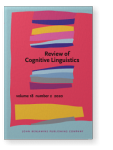Vol. 18:2 (2020) ► pp.458–479
Echoing-contrast combination in non-ironic constructions
The Lexical Constructional Model (LCM) describes ironic constructions as containing echoes that invoke two contrasting situations: expected and real. The reconciliation of the contrast, which happens at the implicational level, gives rise to specific meaning effects in terms of speaker’s emotional reaction (see Ruiz de Mendoza & Galera Masegosa, 2014). The present study elaborates on these insights showing that echoing and contrast can cooperate in non-ironic constructions. In these cases, however, a full-fledged interpretation of the speaker’s reaction happens at the illocutionary level as bearing the value of an indirect invitation to the hearer to assess the truth value of the expected situation. Hence, the collaboration of echoing and contrast in non-ironic constructions may effect conceptual change/development. This is consistent with yet another observation made by the LCM; namely, that the cooperation of echoing and contrast operations in ironic constructions involves a concept-building operation (Ruiz de Mendoza, 2017).
Article outline
- 1.Introduction
- 2.The Lexical Constructional Model
- 2.1The LCM’s account of meaning derivation process
- 2.2Cognitive operations
- 3.Ironic versus non-ironic echoing
- 4.Echoing-contrast combination in non-ironic constructions: Instances of “see”
- 4.1Cases of contrasting echoes
- 4.2Cases where an echo invokes contrasting situations
- 5.Conclusion
-
References
